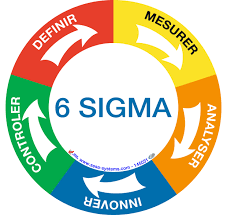 1. What is Six Sigma?
1. What is Six Sigma?
Six Sigma is a statistical measure of variation in a process. We say a process has achieved Six Sigma if the quality is 3.4 DPMO (Defect per Million Opportunities). It’s a problem-solving methodology that can be applied to a process to eliminate the root cause of defects and costs associated with it.
2. Can you explain the different methodology for the execution and the design process stages in Six Sigma?
The main focus of Six Sigma is to reduce defects and variations in the processes. DMAIC and DMADV are the models used in most Six Sigma initiatives.
DMADV is the model for designing processes while DMAIC is used for improving the process.
The DMADV model includes the following five steps:
Define: Determine the project goals and the requirements of customers (external and internal).
Measure: Assess customer needs and specifications.
Analyze: Examine process options to meet customer requirements.
Design: Develop the process to meet the customer requirements.
Verify: Check the design to ensure that it’s meeting customer requirements
The DMAIC model includes the following five steps:
Define the projects, goals, and deliverables to customers (internal and external). Describe and quantify both the defects and the expected improvements.
Measure the current performance of the process. Validate data to make sure it is credible and set the baselines.
Analyze and determine the root cause(s) of the defects. Narrow the causal factors to the vital few.
Improve the process to eliminate defects. Optimize the vital few and their interrelationships.
Control the performance of the process. Lock down the gains.
3. Can you explain the fish bone/Ishikawa diagram?
There are situations where we need to analyze what caused the failure or problem in a project. The fish bone or Ishikawa diagram is one important concept which can help you find the root cause of the problem. Fish bone was conceptualized by Ishikawa, so in honor of its inventor, this concept was named the Ishikawa diagram. Inputs to conduct a fish bone diagram come from discussion and brainstorming with people involved in the project. The following figure shows the structure of the Ishikawa diagram.
The main bone is the problem which we need to address to know what caused the failure. For instance, the following fish bone is constructed to find what caused the project failure. To know this cause we have taken four main bones as inputs: Finance, Process, People, and Tools.
4. What are the different kinds of variations used in Six Sigma?
Variation is the basis of Six Sigma. It defines how many changes are happening in the output of a process. So if a process is improved then this should reduce variations. In Six Sigma we identify variations in the process, control them, and reduce or eliminate defects.
There are four basic ways of measuring variations: Mean, Median, Mode, and Range.
5. Can you explain standard deviation?
The most accurate method of quantifying variation is by using standard deviation. It indicates the degree of variation in a set of measurements or a process by measuring the average spread of data around the mean. It’s more complicated than the deviation process discussed in the previous question, but it does give accurate information.